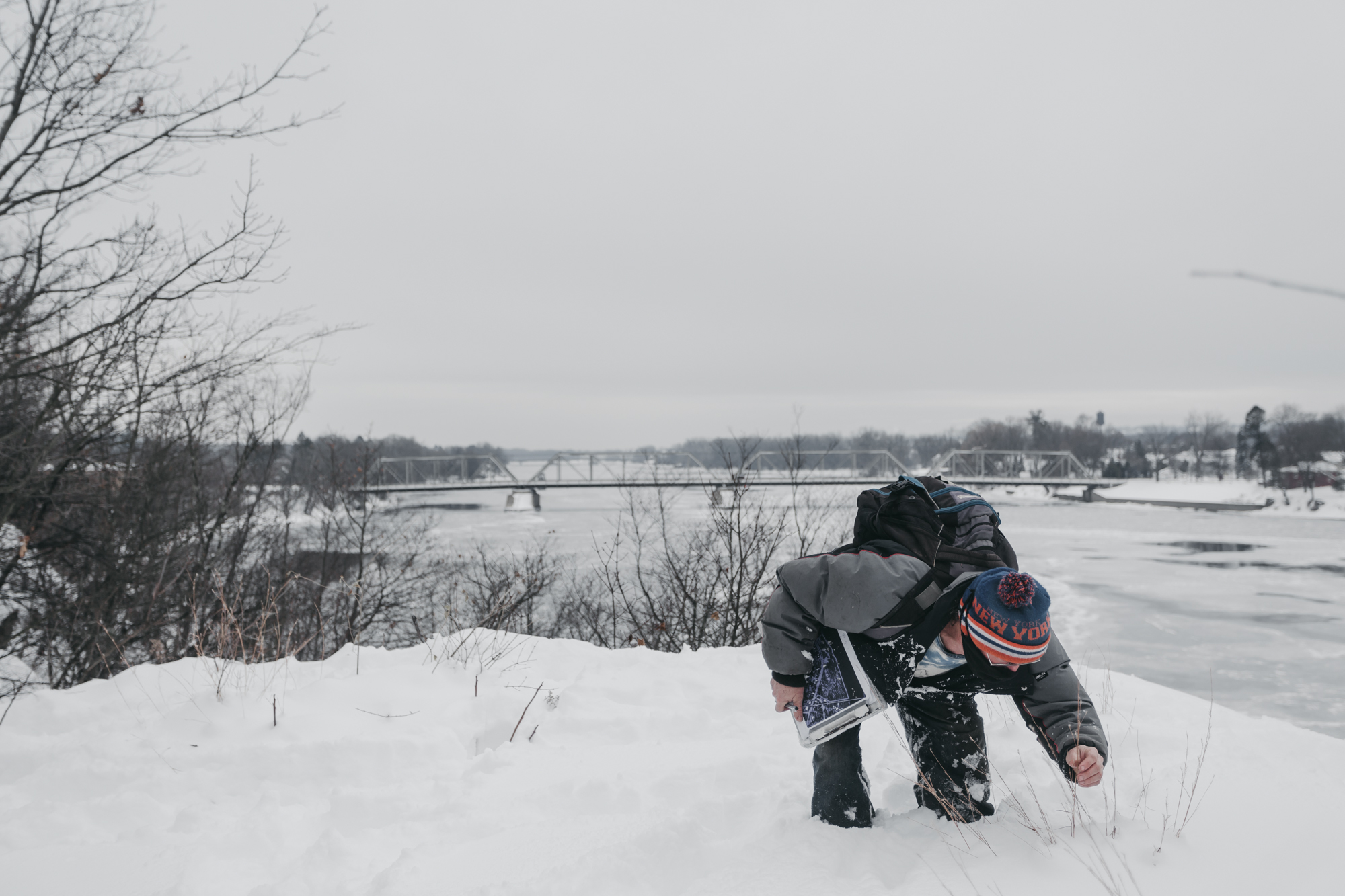Finding Rare Species at 1011
This past week, following a snow storm that dropped nearly 3ft of snow on the Capital Region, The Friends of the Mahicantuck met up with Systems Ecologist Dr. David Hunt and former archeologist and local historian extraordinaire Don Rittner at 1011 to explore the ecology of the land. Dr. Hunt has done extensive work in the past in this area – extending up to Pleasantdale, and had advised us before meeting, of unique ecosystems here. Sure enough, despite the deep snow – Dr. Hunt found about 17 rare Scrub Oak plants strewn along the property – indicating that there could be more buried under snow along with rare regional specific flora of this Rocky Summit Pitch Pine community. Additionally, Scrub Oak is a habitat indicator of the globally rare Buck Moth which could be nesting on this site as well. He also found Dogbane and Shadbush during out walk, stating that in the Spring and Summer more research should be done on the site to better catalog the rare species that call this land home.




As we descended from the highest point on the property that offers a beautiful view of the currently frozen Hudson River, down closer to the waters edge, Don and Dr.Hunt discovered a small rock outcrop poking out from the snow along the shoreline. This rock is Chert – the material that the Indigenous people that lived on and used this land, utilized in the creation of arrowheads. As we walk and learn more about the land’s history – the discovery of settlements and Indigenous burial sites discovered just a few hundred feet away on this side of the river and additional settlements across the river – we can’t help but think that the land at 1011 served as more than just a factory for arrowheads. The topography of the land, the proximity to other sites nearby, its access to the Hudson and nearby Mohawk River and it’s lookout point suggests that this area served a larger purpose for it’s Indigenous stewards.




Despite the deep snow blanketing 1011, the land revealed to us some of her many secrets. We can only imagine what else we can learn once the Spring arrives and the plants return to their Summer glory. We do know – given the discoveries we made this week – that more extensive identification and cataloging of this unique ecosystem needs to be done and that to destroy it with a rezoning, that would allow for it to be built upon and decimated, would lend to an unrecoverable loss for this neighborhood, for the environment and for future generations to discover, explore and learn from. The land at 1011 can provide year round opportunities for exploration, education and and mind/body connections to our natural resources. Please help us #Save1011 for our community now, and for generations to come.


